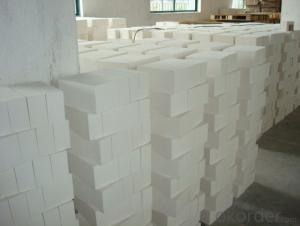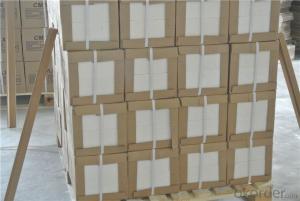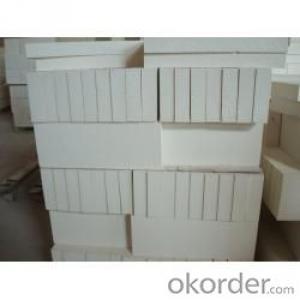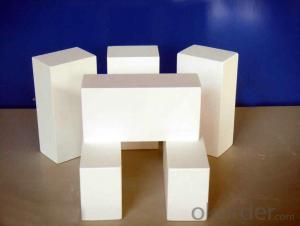High Temperature Insulating Firebrick Bubble Alumina Brick
- Loading Port:
- Tianjin
- Payment Terms:
- TT OR LC
- Min Order Qty:
- 2 m.t.
- Supply Capability:
- 1000 m.t./month
OKorder Service Pledge
OKorder Financial Service
You Might Also Like
Bubble Alumina Brick and Insulating Firebrick are high temperature refractory brick, max temp 1800 deg C, used in furnace kiln.
Bubble Alumina Brick and Insulating Firebrick are high temperature refractory brick.
Bubble Alumina Brick. We stock in both 2.5 & 3” sizes. We also carry double bump interlocking anchor styles. For use up to 1800C, these brick have excellent insulating properties as well as high hot strengths.
Insulating firebrick, we carry produces thirteen types of Insulating Fire Brick for use in applications from 2,000°F (1,093°C) to 3,200°F (1,760°C). Each type is formulated to meet specific thermal and physical requirements and after firing is machined to precise tolerances.
Made from high purity refractory clays and other ceramic raw materials, these insulating fire brick contain a carefully graded organic filler which is burned out during manufacture to give a uniform controlled pore structure.
Advantages of bubble alumina brick.
High Insulating Va
The high compressive strength of bubble alumina brick allows for self-supporting structures at elevated temperatures. Insulating fire brick are compatible with dense fire brick and add strength to the whole construction.
Low Heat Storage
Lower heat storage versus dense brick means reduced fuel costs in cyclically operated heating equipment. lue
The light weight and high insulating value of refractory brick make possible thinner furnace walls, improved efficiency and lower operating costs.
Strong
The high compressive strength of bubble alumina brick allows for self-supporting structures at elevated temperatures. Insulating fire brick are compatible with dense fire brick and add strength to the whole construction.
Low Heat Storage
Lower heat storage versus dense brick means reduced fuel costs in cyclically operated heating equipment.
Application
DJM 26 Light Weight Insulating fire brick are used for the lining of converter, alternating current arc furnace, direct Current arc furnace and the ladle slag line, etc.
Company Advantage
(1)Long Insulating Fire Brick manufacture history: 25 years manufacturer
(2)Advanced equipment
(3)Diversification of production standards: ISO ANSI FEPA JIS ASTM
Equipment
1 unit of Ceramic Abrasive (SG Abrasive) pilot production line
1 unit of high-end coated abrasives (abrasive cloth) production line
2 units of Boron Carbide production lines
Q1 What’s the transport method?
A1 FCL delivery goods with wooden pallet or wooden case by sea; If LCL delivery, must with wooden case; Sometimes need open top, flat rack or bulk cargo.
Q2 What’s the required payment term?
A2 Generally 30% TT as the prepayment, 70% TT before delivery. If need, 100% Irrevocable Letter of Credit or negotiation.
Q3 Which country are our products exported to?
A3 Apart from entire Chinese market, the US, Russia, Japan, Korea, Australia and some Southeast Asian Nations.
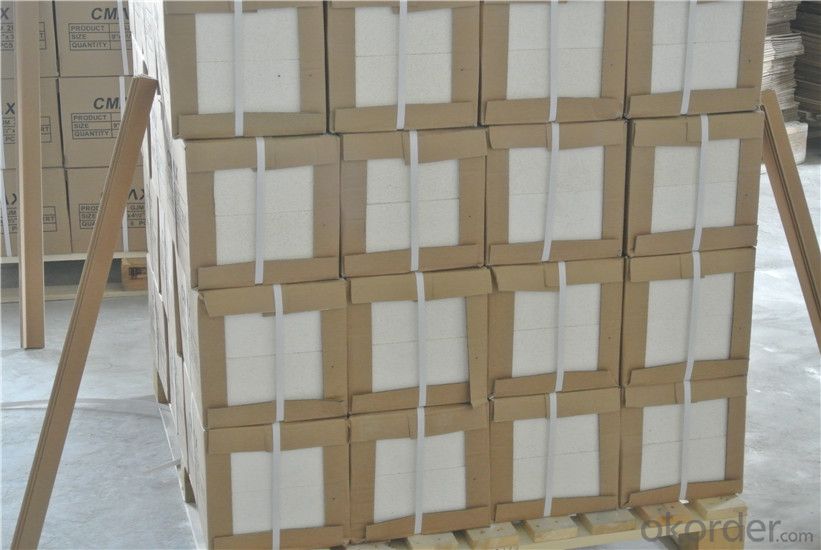
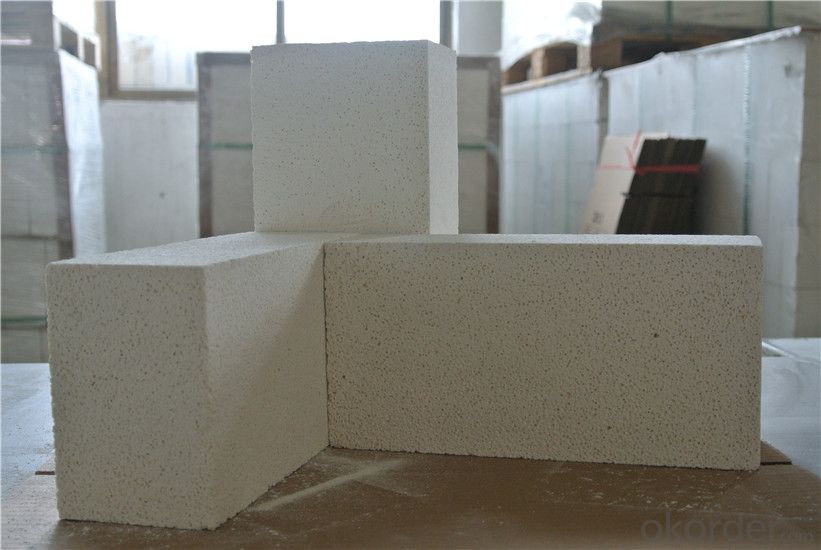
- Q:Do insulating fire bricks require a specific curing or drying process before use?
- Insulating fire bricks typically necessitate a distinct curing or drying procedure prior to utilization. This action eradicates any moisture or volatile organic compounds (VOCs) that could be within the bricks and guarantees they attain their utmost insulating capabilities. The curing or drying procedure for insulating fire bricks generally entails a gradual increase in temperature, allowing the release of any moisture or VOCs without causing cracks or damage to the bricks. The rate of temperature escalation and the overall duration of the curing process may differ based on the bricks' type and thickness. Adhering to the manufacturer's instructions and recommendations for the specific type of insulating fire bricks employed is crucial. This ensures that the curing or drying process is executed accurately, preparing the bricks for use in high-temperature applications like kilns, furnaces, or fireplaces. Failing to appropriately cure or dry the bricks may lead to diminished insulating properties, as well as potential cracks or failure when subjected to elevated temperatures.
- Q:Are insulating fire bricks resistant to nitric acid?
- Insulating fire bricks are not typically resistant to nitric acid. Nitric acid is a highly corrosive substance that can react with and dissolve many materials, including certain types of fire bricks. While insulating fire bricks are designed to withstand high temperatures and provide thermal insulation, they may not possess the necessary chemical resistance to withstand the corrosive effects of nitric acid. If nitric acid exposure is expected, it is advisable to use acid-resistant materials specifically designed for such applications.
- Q:Are insulating fire bricks resistant to thermal fatigue?
- Yes, insulating fire bricks are generally resistant to thermal fatigue due to their ability to withstand repeated heating and cooling cycles without significant damage or deterioration. Their high thermal shock resistance and low thermal conductivity make them ideal for applications where thermal cycling occurs frequently.
- Q:Can insulating fire bricks be used in the construction of foundry molds?
- Yes, insulating fire bricks can be used in the construction of foundry molds. Insulating fire bricks are designed to withstand high temperatures and provide excellent thermal insulation properties, which make them suitable for use in foundry molds. These bricks help to maintain a consistent temperature within the mold, ensuring efficient and effective casting processes.
- Q:Can insulating fire bricks be used in the construction of hot water boilers?
- Yes, insulating fire bricks can be used in the construction of hot water boilers. These bricks are designed to withstand high temperatures and provide excellent insulation, making them suitable for applications such as hot water boilers where heat retention is crucial.
- Q:Are insulating fire bricks resistant to flame impingement?
- Yes, insulating fire bricks are resistant to flame impingement.
- Q:Outside brick wall, inside brick wall how to return a responsibility?
- Use in indoor environment using brick, not so bad, are generally Youmianzhuan, of course there are all the tiles, bricks, colorful patterns, the appearance of small size error.
- Q:The difference between ordinary and diatomite brick refractory brick
- Refractory brick belongs to a large class, according to different materials used are divided into: high alumina brick, dolomite brick, magnesia chrome brick, magnesia spinel brick, phosphate brick, carborundum brick, brick, mullite bricks etc..
- Q:Can insulating fire bricks be used in the construction of ladles?
- Insulating fire bricks are indeed suitable for ladle construction. These bricks are crafted from lightweight materials that possess exceptional thermal insulation properties. As a result, they are well-suited for situations where heat retention or control is paramount, such as in the creation of ladles for metal or glass industries. By utilizing insulating fire bricks, heat loss can be minimized, energy efficiency can be enhanced, and the desired temperature within the ladle can be maintained. Furthermore, their lightweight composition facilitates easier handling and installation during ladle construction. Consequently, insulating fire bricks are a viable choice for ladle construction, as they furnish the necessary thermal insulation and durability requisite for these high-temperature applications.
- Q:Are insulating fire bricks resistant to carbon monoxide?
- Yes, insulating fire bricks are resistant to carbon monoxide.
1. Manufacturer Overview |
|
|---|---|
| Location | |
| Year Established | |
| Annual Output Value | |
| Main Markets | |
| Company Certifications | |
2. Manufacturer Certificates |
|
|---|---|
| a) Certification Name | |
| Range | |
| Reference | |
| Validity Period | |
3. Manufacturer Capability |
|
|---|---|
| a)Trade Capacity | |
| Nearest Port | |
| Export Percentage | |
| No.of Employees in Trade Department | |
| Language Spoken: | |
| b)Factory Information | |
| Factory Size: | |
| No. of Production Lines | |
| Contract Manufacturing | |
| Product Price Range | |
Send your message to us
High Temperature Insulating Firebrick Bubble Alumina Brick
- Loading Port:
- Tianjin
- Payment Terms:
- TT OR LC
- Min Order Qty:
- 2 m.t.
- Supply Capability:
- 1000 m.t./month
OKorder Service Pledge
OKorder Financial Service
Similar products
New products
Hot products
Related keywords
